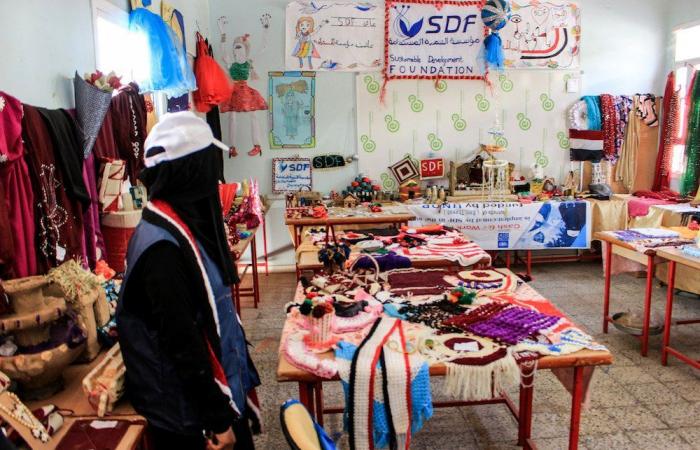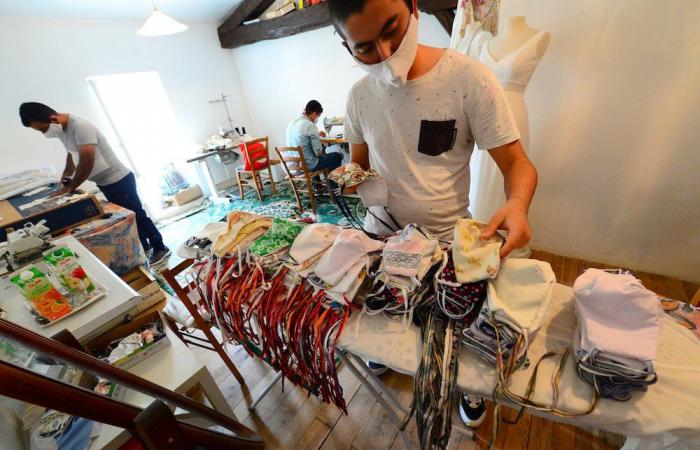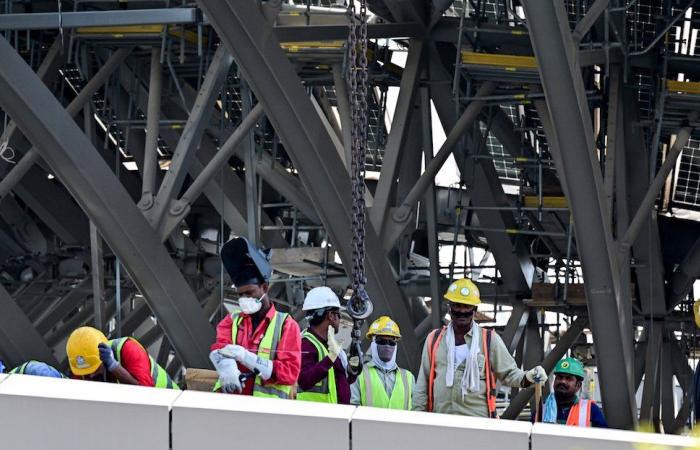Thank you for reading the news about How migrants are aiding the global fight against coronavirus and now with the details
Jeddah - Yasmine El Tohamy - ABU DHABI: From cooking free meals and serving as frontline medical staff to sewing face masks and producing soap, migrants and refugees have become significant contributors to the global fight against the coronavirus disease (COVID-19) pandemic.
However, current data has not fully captured the scale of their sacrifices or the challenges they face.
Contrary to populist xenophobic beliefs, migrants have little or no connection to COVID-19’s emergence as a pandemic. Rather, intense population movements, in particular of tourists, business workers, and possibly political activists, have been a key vehicle of transmission of the virus.
That said, the presence and movement of migrants does have a bearing on the demographic, social, cultural, and economic factors influencing in a positive way the local contexts of the global health crisis.

Despite demanding circumstances, migrants have made significant sociocultural, civic-political, and economic contributions to both origin and destination countries and communities, including by being agents of change in a range of sectors.
Migrants also tend to have higher entrepreneurial activity compared with natives, according to the UN/IOM World Migration Report 2020, a trait that could prove helpful to post-pandemic recovery efforts.
While large swathes of the population now work from home, many of the essential services that keep people safe from COVID-19 and help maintain lifestyles are being performed by migrant workers or undocumented immigrants.
According to some estimates, migrants account for more than 10 percent of the occupations in such key sectors as medical services, transport and storage, personal care, and food processing.
These occupations are regarded as belonging to the low-skill category and hence the migrants who hold them tend to get overlooked by authorities in Europe and the US when it comes to processing asylum or residence applications, to say nothing of welfare benefits.

A displaced Yemeni woman stands in a handicraft showroom at the Sustainable Development Foundation (SDF) which provides employment opportunities for women in handicrafts, sewing, and embroidery, in the northern district of Abs in Yemen's northwestern Hajjah province on February 2, 2019. (AFP/File Photo)
Long before the pandemic forced at least a grudging recognition of the key role played by foreign migrant workers in different countries, international migration had occupied center-stage in the great debates of the 21st century.
The close links between economic, political, and social issues, on the one hand, and mobility on the other, have added to the complexity of migration. Another reason is the availability of more information on migration and migrants.
Before the COVID-19 outbreak, the largest migration corridors tended to be from developing countries to larger economies such as the US, France, Russia, the UAE, and Saudi Arabia, according to the UN/IOM report.
Among the major beneficiaries of migrants’ contribution are the revenues and pension systems of Western countries. Even nations with younger populations are reaping the rewards of hosting migrants who establish startups and small- and medium-sized enterprises (SMEs).
The need for the skills, talents, and hard work associated with migrants and migrant workers can hardly be overstated, especially at a time of pandemic-induced recessions.
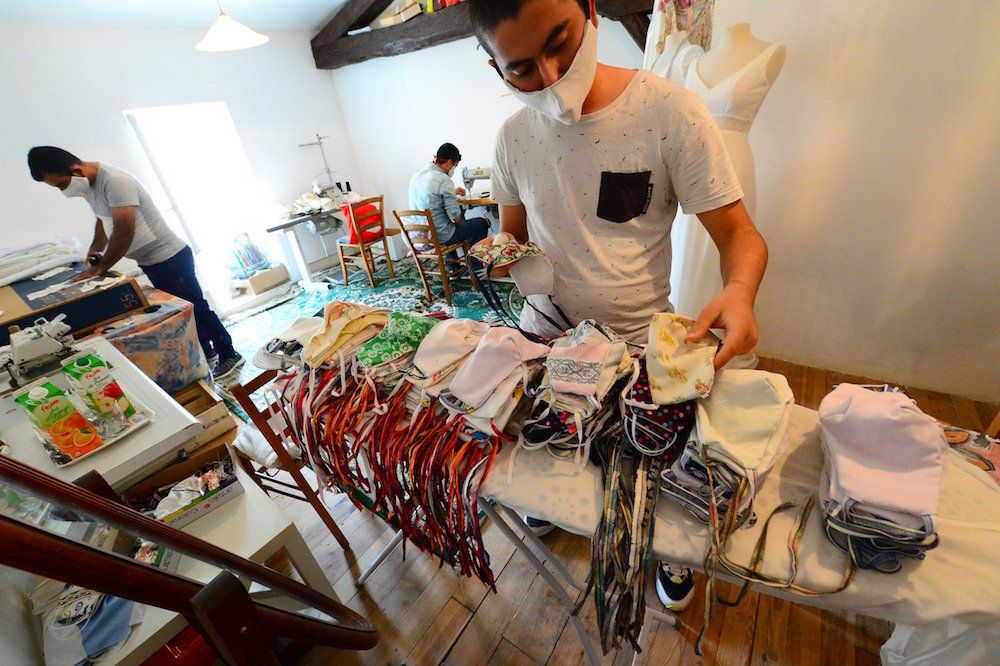
Syrian refugee Hekmat Shikho prepare a distribution of protective masks on April 16, 2020 in Lavardac, southwestern France, where he and his family found asylum after fleeing the war in Syria. (AFP/File Photo)
“Refugees are rarely seen as an opportunity and contributors to local societies,” Rula Amin, the UN Refugee Agency’s (UNHCR) senior communications spokesperson for the Middle East and North Africa region, told Arab News.
“We need to go beyond symbolic stories and see the potential of displaced populations. Otherwise we will end up with a lot of wasted potential, a lot of doctors and educators excluded from the local labor markets and anti-pandemic efforts.”
Since 2017, there has been historic change at an international level with UN member states coming together to finalize two global compacts on the manifestations of migration and displacement: The Global Compact for Safe, Orderly, and Regular Migration, and the Global Compact on Refugees.
In the Middle East, as early as 2017, there were transnational and unified calls to provide all migrants and refugees from war-torn countries greater access to local labor and economic markets.
Little has substantially changed since, especially in large refugee-hosting countries such as Jordan and Lebanon, where local populations continue to suffer from chronic unemployment.
INNUMBERS
Migrants during COVID-19 pandemic
* 272m Global migrant population in 2019.
* 12m Migrants in COVID-19 frontline roles in the US.
* $68bn Annual remittances by migrants from the US.
* $36.1bn Annual remittances from the KSA.
* 317 People returned to Libya after May 25 escape bid.
Meanwhile, the World Bank has predicted a 20 percent drop in migrant remittances by the end of this year, signifying the broader economic impacts of the pandemic on migrants and diaspora. Ideally, the socio-economic well-being of migrants and refugees should be safeguarded because it is essential to post-pandemic recovery.
The Gulf region is home to two of the three top remittance-sending countries in the world – Saudi Arabia and the UAE – accounting for a total of $80.5 billion in outflows in 2019, according to the World Bank. Both countries have invested heavily in ensuring the safety of their migrant communities.
Healthcare professionals from the Gulf region have also been serving on the medical frontlines in the US and Europe. For example, nine Emirati doctors have chosen to stay in France and help their local colleagues in the fight against COVID-19.
Experts and policymakers have been focusing on ways of making the system work better for everyone. Some believe emergency humanitarian work in combination with mid-term and holistic development could result in the creation of local economic opportunities involving refugees.

Some five millions Afghans driven by war, oppression and poverty have crossed the border into Pakistan and Iran in the past three decades, seeking better lives and jobs. (AFP/File Photo)
The resultant growth opportunities could mitigate the impacts of refugee hosting on host communities. In this context, refugee profiling and skills assessment would be key to matching refugee skills with existing labor demand and identifying how new job opportunities for refugees could be provided.
A leader in this field is the UAE’s Abdul Aziz Al-Ghurair Foundation for Education (AGFE), which has been assisting refugee youth in the region with education and employment opportunities since 2018, particularly through its Refugee Education Fund.
“It is very important for us to focus on output-focused philanthropy, looking at this pathway of education to improve livelihoods, and not just education for the sake of education,” Danah Dajani, director of philanthropic partnerships at AGFE, told Arab News.
“We provide these young people with access to market-driven courses that lead to certifications that are credited and can open up doors to livelihoods.
“The whole idea is (for young refugees in Jordan and Lebanon) to become independent and contribute back to their host community, but also in the long run, if they return to their home country, that they are able to rebuild it as well,” Dajani said.
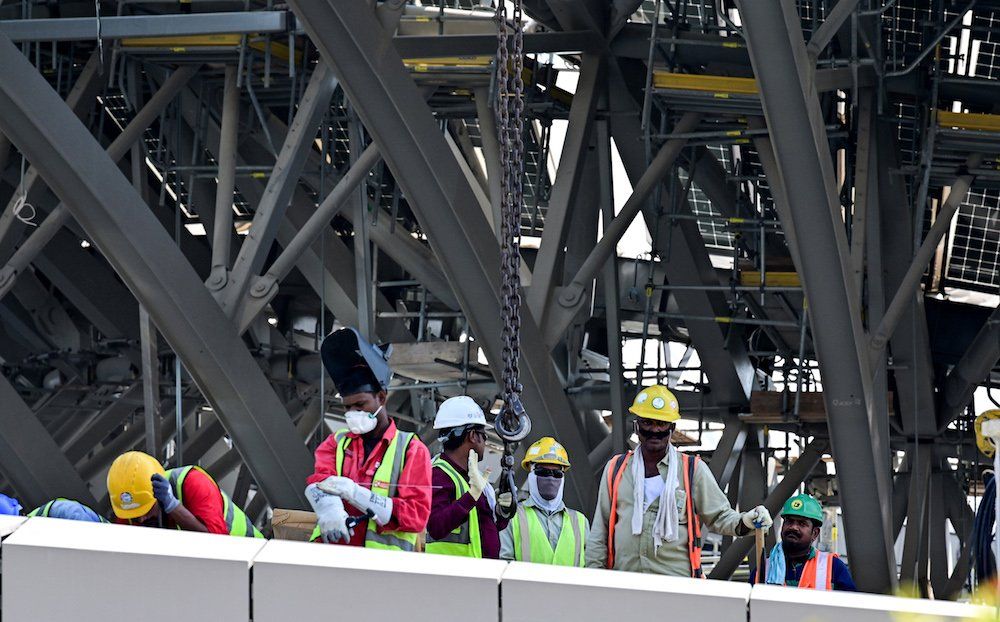
This picture taken in Dubai shows construction workers at the site of the Expo 2020. (AFP/File Photo)
Migrant and refugee contributions occur as a part of broader structural settings and social processes that support and shape societies. The estimated number and proportion of international migrants already surpass some projections made for the year 2050, which were in the order of 2.6 percent, or 230 million. Given their rising numbers, the potential remains great, albeit largely untapped.
By their very nature, the UN/IOM report said, the complex dynamics of migration can never be fully measured, understood, and regulated. However, there is a continuously growing and improving body of data and evidence that can help make better sense of the basic features of migration and how they are changing.
The COVID-19 period has brought to the fore the vital roles foreign migrant workers play in their host societies on the frontline and in other sectors, including social contribution and entrepreneurial activities related to SMEs.
Understanding the evolving context in which migration is occurring would help to enhance migrants’ contributions to society, ensure broader social inclusion, and promote their well-being.
Public recognition of migrants as important and migration as normal would also go a long way.
----------------------
Twitter: @eminaosmandzik
These were the details of the news How migrants are aiding the global fight against coronavirus for this day. We hope that we have succeeded by giving you the full details and information. To follow all our news, you can subscribe to the alerts system or to one of our different systems to provide you with all that is new.
It is also worth noting that the original news has been published and is available at Arab News and the editorial team at AlKhaleej Today has confirmed it and it has been modified, and it may have been completely transferred or quoted from it and you can read and follow this news from its main source.



